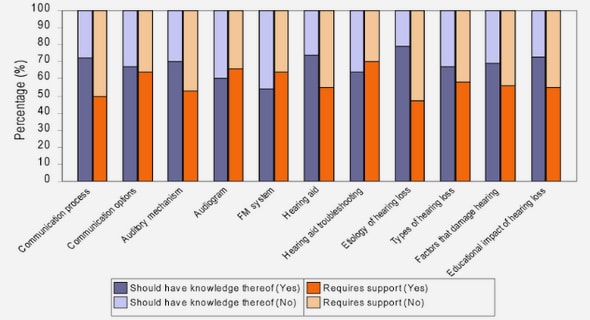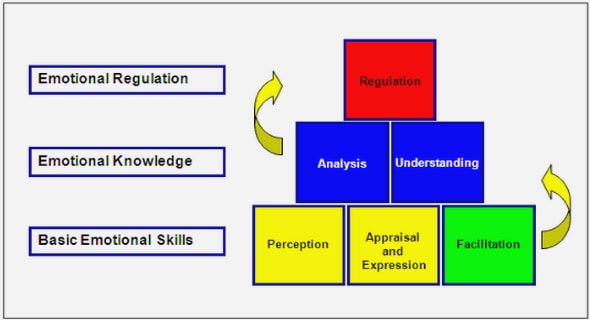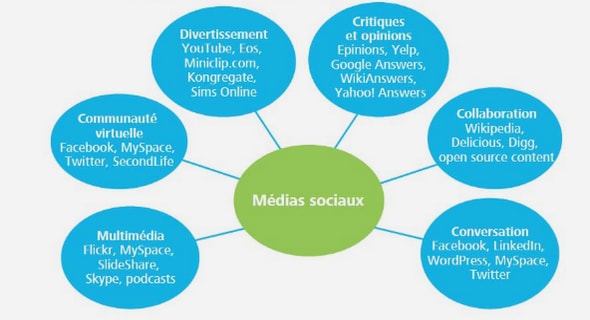Get Complete Project Material File(s) Now! »
Chapter 3 Research Design and Methodology
Introduction
What are the barriers preventing undergraduate students (in all undergraduate English courses) from improving their oral and written skills in English? This chapter presents the research methodology that was used to gather information which answers the research question of this study. Research methodology refers to a process used to collect information and data for the purpose of finding solutions to a problem being investigated. A thorough description, justified and detailed research methodology was used in this study. This included the research methods, research design, research procedures, and the study area, sampling techniques, instruments, data collection procedures, research ethics, data analysis procedures, sources of data, validity and reliability and definitions of terms. This study sought to establish whether the course syllabi and the teaching methods of oral and writing skills were preventing students from improving their oral and writing skills in English. The techniques used in this study to collect data included questionnaires, interviews, document analysis and class observation.
Research design
A research design refers to the overall strategy that a researcher chooses to integrate the different components of the study in a coherent and logical way, thereby ensuring that the research problem will be effectively addressed (University of California Libraries, 2015). This study investigated barriers preventing undergraduate students from improving their oral and written skills in English at tertiary level as discussed in Chapters 1 and 2. The qualitative approach was used as an overall strategy, where different types of instruments such as questionnaires, interviews, class observation and document analysis were used to collect data.
Three previous studies done by Wolfaardt (2001) and Frans (2007, 2009) on the generally poor performance of learners in content subjects at secondary level concluded that performance (examination results) was affected by English as a language. What exactly is preventing some students from writing and speaking English competently and correctly at tertiary level? This study sought to answer the research question; what are the barriers preventing undergraduate students from improving their oral and written skills in English at the two tertiary institutions?
The study used information obtained from 40 students, 16 lecturers, eight syllabi or study guides, eight course coordinators in the English departments using a qualitative approach.
Data collection and procedure
Chapter 1 indicated that data was collected from the syllabi, lecturers teaching the courses, students studying the courses and students’ written work at the institutions studied. This study is concerned with the primary data which were collected for the first time and is original. The non-probability sampling which was purposefully used included people (lecturers and students) who had knowledge of the topic of this study. Questionnaires, interview questions, class observations and analysis of students’ written work were the techniques and instruments used to collect data. Information was gathered from three Heads of Departments of Languages, Communications and the Language Centre as well as from eight Course Coordinators, 16 lecturers, syllabi, students’ written work and 40 students, that is, 20 English students from each institution. The students were deliberately sampled because they studied these courses, while coordinators and lecturers taught these courses.
The researcher first did a preliminary investigation on the same issue. The preliminary investigation included a few samples at the two institutions. This enabled the researcher to evaluate the strengths and weaknesses of the questions and thereafter to make adjustments before the main research was undertaken. The researcher had brief interviews with one Head of Department and two Course Coordinators. The researcher also handed out the questionnaires to few students and lecturers who were purposefully sampled because of their involvement in the problems of English second language learning being investigated. The participants were given one week to complete the questionnaires which were then collected after a week by the researcher. This enabled the researcher to verify the information given and address any questions that posed problems to the participants.
Research paradigm
Schumacher and McMillan (2010: 320) describe a paradigm as a set of assumptions about how things work, and qualitative research methods involve very different assumptions about how research should be conducted and the role of the researcher.
Schumacher and McMillan (ibid) point out that some of the major research paradigms used in education include positivist and constructivist. Constructivist paradigm is basically an idea based on observation about how people learn Schumacher and McMillan (ibid) and has been applied in this study. Constructivist means that people construct their own understanding and knowledge of the world through experiencing things and reflecting on those experiences. According to Schumacher and McMillan (ibid), the emphasis for research into social phenomena is on the fact that the researchers would try to understand why people behave as they do in their settings. The methods used by the researchers to access people’s understanding of their social reality include observations, questionnaires and interviews designed to collect data. The paradigm acts as a perspective that provides a rationale for the research and commits the researcher to particular methods of data collection, observation, and interpretation. Paradigms are, therefore, important to the research design because they impact both on the nature of the research question, that is what is to be studied and also on the manner in which the question is to be studied. By ensuring that the research and methods used fit logically within the paradigm, the principle of coherence can be preserved when designing a research study. In this study, the researcher used a qualitative approach to collect data through questionnaires, interviews, class observation and document analysis.
This study was limited to two universities. It is a case study because this research requires the researcher to solve a problem by developing a new plan and is therefore problem oriented (UNSW Current Students 2013). A programme is proposed (see chapter 5) that could be used to solve the problem investigated. Rowley (2002) adds that in a case study like this one uses a variety of evidence from different sources. In view of this, the sources that were use were items such as documents, interviews and observations. In this sense, the University of California Libraries (2015) describes a case study as in-depth study of a particular research problem, for example the research problem of this study: the barriers that prevent students from improving their writing and speaking skills at two tertiary institutions. A case study design can extend experience and add strength to what is already known through previous research.
Littlejohn (2000) asserts that human beings cannot be studied using models developed for the physical sciences because humans are qualitatively different from natural events. The interpretative paradigm supports the belief that reality is constructed by subjective perception and predictions cannot be made. The researcher agrees with this paradigm and is also interested in understanding the participants in this study because people have free will, purposes, goals, and intentions, so people should be studied as active agents.
Research approach
According to Williams (2011) a research methodology is a way used to find out the result of a given problem on a specific matter or problem that is also referred to as a research problem. In methodology, the researcher uses different criteria for solving or researching the given research problem. Different sources use different methods for solving the problem. Several methods or approaches are used to find solutions to a given problem. In this study, the qualitative method is used. The quantitative approach was not used in this study not because it cannot be used to find solutions to a problem but because in quantitative methods, researchers collect facts and study the relationship between sets of facts. In addition, Kelly (2006) points out that quantitative method is an important aspect of many action research studies and case studies undertaken by participants or even outsiders, whereas qualitative methods seek deep analysis, thus, a qualitative approach was used.
Qualitative approach
Crocker, (2009:5) defines qualitative research as an umbrella term used to refer to a complex and evolving research methodology. The approaches in qualitative research use a wide variety of data collection methods, such as observation, interviews, open-response questionnaire items and verbal reports.
Declaration
Abstract
List of Tables
Chapter 1: Introduction to the study
1.1 Introduction
1.2 English as a medium of communication
1.3 Preliminary Literature Review
1.4 Theoretical Framework
1.5 Conceptual framework
1.6 Problem statement
1.7 Aims and objectives of the study
1.8 Research Design
1.9 Research Approach
1.10 Sampling and Delimitation of the study
1.11 Limitations of the study
1.12 Summary
Chapter 2: Literature Review on the identified barriers investigated in the study
2.1 Introduction
2.2 Theoretical framework
2.3 The theory of English as a Second Language
2.4 The Theory of Curriculum
2.5 Previous Empirical Investigation
2.6 Barriers to learning a second language
2.7 Summary.
Chapter 3 Research Design and Methodology
3.1 Introduction
3.2 Research design
3.3. Data collection and procedure
3.4 Research paradigm
3.5 Research approach
3.6 Research methods
3.7 Summary
Chapter 4 Data analysis and discussion
4.1 Introduction
4.2 Syllabi or study guide/content analysis (Appendix A)
4.3 Questionnaire Data
4.4 Interview Data
4.5 Class Observation Data (Appendix F)
4.6 Students’ written work data (Appendix G)
4.7 The Writing Centre at University A
4.8 Synthesis of key findings
4.9 Emerging trends from data
4.10 Summary
Chapter 5: Summary, recommendations and conclusion
5.1 Introduction
5.2 Summary of research findings
5.3 The inability of students to use morphemes in oral and writing skills
5.4 Research conclusion
5.5 Recommendations
5.6 Contribution to the body of knowledge
5.7 Suggestions for future research
References
Appendices
GET THE COMPLETE PROJECT
BARRIERS TO LEARNING ENGLISH AS A SECOND LANGUAGE IN TWO HIGHER LEARNING INSTITUTIONS IN NAMIBIA


